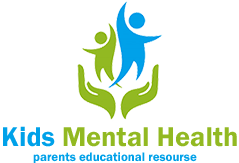Recognize the emotional struggles that may drive bullying behaviors, encouraging open conversations about feelings and frustrations to foster empathy and self-awareness. Integrate structured social-emotional learning programs in schools, aiding in the development of essential skills like empathy, self-regulation, and conflict resolution. Encourage participation in activities that promote positive social interactions, such as team sports or volunteer work, which help to build self-esteem and a sense of community. Support access to professional help when necessary, ensuring that psychological support and counseling services are readily available to address underlying issues effectively. These strategies not only aid in mitigating the harmful effects of bullying on others but also safeguard the bully’s mental health, social relationships, and future potential.
Understanding the Bully’s Perspective
Understanding why children bully others requires a compassionate look at their internal and external worlds. Often, children who bully are grappling with their own difficulties. They might be facing challenges at home, such as family conflicts or neglect, leading them to act out in search of control or attention they feel is missing. For some, bullying is a learned behavior, modeled by an environment where anger or aggression is the norm rather than the exception.
Additionally, feelings of insecurity or inadequacy might drive a child to target others, attempting to boost their own sense of self-worth by diminishing someone else’s. It’s crucial to recognize that these behaviors may also result from a lack of social or emotional skills. Without tools for healthy interaction or conflict resolution, children might resort to dominating others as a first response to stress or disagreement.
Experts in child psychology suggest that intervention focusing on empathy development and coping strategies can be incredibly beneficial. By teaching children to understand their own emotions and those of others, and by providing supportive environments, adults can guide them towards more positive ways of connecting with peers. Opening dialogues about emotions, and providing consistent, caring support can make all the difference in redirecting a bully’s path, turning their potential negativity into personal growth.
Social Consequences for Bullies
Bullies often face significant social consequences that can affect their relationships, reputation, and even their mental health. While the immediate focus is usually on the impact of bullying on victims, it’s important to understand that bullies can also experience adverse effects. This behavior can lead to social isolation as peers might distance themselves, fearing association with the bully or disapproving of their behavior. Over time, this can damage the bully’s reputation, making it difficult for them to form meaningful connections.
Moreover, engaging in bullying can hinder the development of empathy, a crucial skill for healthy relationships. Without understanding others’ feelings, bullies might struggle to build genuine friendships, leading to loneliness and a lack of support networks. These social challenges can extend into adulthood, affecting personal and professional relationships.
Additionally, the stress of maintaining a tough exterior, along with potential guilt or regret about their actions, can heighten a bully’s own risk of mental health issues. Just as we explore the implications of other issues like childhood obesity’s effect on mental well-being, understanding the mental health risks for children who bully is crucial.
Parents, teachers, and caregivers play a vital role in recognizing and addressing bullying behavior, offering support and guidance to the bully, while working towards fostering a more empathetic and inclusive environment. By addressing these behaviors early and compassionately, we not only help the victims but can also guide bullies toward more positive social interactions and a healthier social life.

Emotional and Mental Health Impact
While the focus on bullying often highlights the damage inflicted on the victim, it’s also essential to consider the emotional and mental health impact on the bully. Engaging in bullying behavior can lead to significant emotional struggles, including feelings of guilt and shame that may affect a young person’s development and overall mental health. It’s crucial to understand that bullying is not just a one-sided issue and can also indicate underlying emotional or psychological challenges faced by the bully.
Children who bully others might feel guilt or shame, especially if they recognize the harm they’re causing. This internal conflict can lead to increased anxiety and stress, ultimately affecting their mental well-being. The negative impact of these emotions can manifest in various ways, from poor academic performance to difficulties in peer relationships. Furthermore, these feelings might also contribute to long-term issues like depression or self-esteem problems.
It’s important for parents, teachers, and healthcare professionals to acknowledge these emotional struggles and provide appropriate support. Encouraging open conversations and offering guidance can make a substantial difference. Additionally, looking into related aspects like diet and mental health might help address some underlying issues.
By empathetically considering the bully’s emotional health, we open the door to more comprehensive interventions. This approach not only aims to stop the cycle of bullying but also fosters a supportive environment where all children can thrive. Through understanding and addressing the complex emotional web surrounding bullying, we can better support all children in overcoming these challenges.

Academic Achievement and Future Implications
Bullying doesn’t just impact the victims; it can significantly affect the bullies themselves, particularly in their academic journeys and future opportunities. When children engage in bullying, it often signals underlying issues, such as emotional or social struggles, that could detract from their focus on academics. Studies show that bullies are more likely to disengage from school, leading to poorer performance and attendance. Their classwork may suffer because their attention is divided or because they’re dealing with disciplinary actions that keep them away from learning environments.
These academic difficulties can ripple into their future. When students fall behind in school, they might struggle with low self-esteem and increased frustration, which can limit their ability to see themselves as successful. Over time, this can result in fewer opportunities for higher education or future job prospects. A former bully’s significant potential might remain untapped, not because of a lack of ability, but due to an academic foundation weakened by their own disruptive behavior.
Yet, there’s hope. Through compassion and constructive guidance, parents, teachers, and healthcare professionals can help children understand the impact of bullying and develop healthier behaviors. This process might involve helping a child build empathy, encouraging positive peer relationships, or even utilizing school resources designed to improve emotional intelligence and communication skills. By addressing these issues early on, we not only help prevent bullying but also place children on a path toward a more promising future, opening doors that could have remained closed. Understanding and intervening in bullying behavior can be transformational, enabling both a better academic experience and a brighter, more fulfilling future.

Legal and Disciplinary Repercussions
Bullying can have far-reaching consequences for the aggressor, not just in their current environment but also throughout their future. Schools often have clear policies in place that deal with such behavior, which can lead to disciplinary measures like detention, suspension, or even expulsion. These actions aim to address the behavior and promote a safer environment for all students. For some, this can be an eye-opening experience that serves as a catalyst for positive change, helping them rebuild relationships and refocus on building resilience.
From a legal standpoint, bullying might escalate to more serious interventions, particularly if it crosses into harassment or physical violence. In some regions, there are laws in place that classify severe bullying as a form of criminal activity, which could result in legal consequences such as court appearances or juvenile detention. These repercussions are designed not only to hold the bully accountable but also to emphasize the importance of respect and empathy in fostering a supportive community.
It’s crucial to remember that every child involved in bullying, whether as the bully or the bullied, needs help and understanding. Encouraging open conversations and integrating restorative practices within schools can provide a pathway toward healing and personal growth for those involved. Ensuring that all individuals in a child’s life are informed and compassionate can create a nurturing atmosphere that promotes healthy development and reduces the likelihood of further issues.
How to Help a Child Who Bullies
Helping a child who bullies involves a compassionate approach focused on understanding, guidance, and support. Start by creating an open line of communication. Children who bully might be struggling with their own emotions or facing challenges elsewhere in their lives. Encourage them to express how they feel and listen actively without judgment. Offering a safe space can help them open up about underlying issues.
Work together to identify and understand triggers for their behavior. Discuss situations that might lead them to act aggressively and explore alternatives. This can help them replace negative actions with positive ones.
Positive reinforcement plays a crucial role in behavior change. Celebrate improvements, however small, to motivate continued progress. Reinforcing kindness towards others will gradually build their empathy and understanding.
Role-playing different scenarios can be a helpful way to teach conflict resolution and empathy. It allows children to practice responding to difficult situations in a constructive manner. Encourage them to think about how their actions impact others, cultivating a more empathetic perspective.
Collaborate with schools and professional counselors to ensure consistent messaging. Teachers can provide valuable support by monitoring interactions and providing feedback. Education professionals trained in children’s mental health can offer tailored strategies that cater to the child’s unique needs.
Avoid labeling the child as a “bully,” keeping the focus on specific behaviors. This fosters a growth mindset, emphasizing the possibility of change and improvement.
By addressing the root causes of bullying behavior with love and understanding, we can guide children towards a more positive path, enhancing their social skills and future opportunities.
Conclusion
Concluding our exploration of bullying reveals it as a significant issue that affects not only the victims but also the individuals carrying out these behaviors. It’s essential for parents, teachers, and healthcare professionals to address bullying with empathy and understanding to foster healthier environments for all children. This isn’t just about stopping harmful actions; it’s about supporting everyone involved. Victims need assurance and protection to heal, while bullies require guidance and intervention to better understand and manage their behaviors. This dual approach ensures that children feel safe, accepted, and supported. Providing resources and approachable dialogue can transform negative experiences into opportunities for growth, resilience, and positive change. By working collaboratively, we can help children develop healthier social skills and build a more supportive community. In doing so, we can help shift the narrative around bullying, turning it from a damaging experience to a catalyst for positive transformation for all involved.







